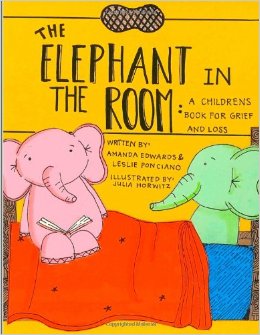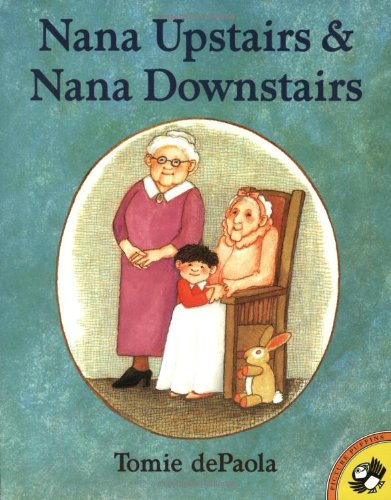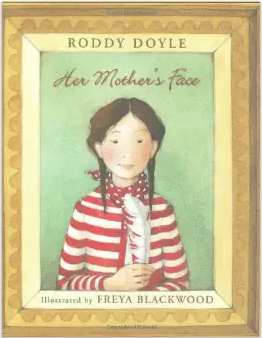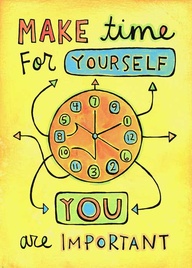Talking to Children About COVID-19 (Coronavirus): A Parent Resource
A new type of coronavirus, abbreviated COVID-19, is causing an outbreak of respiratory (lung) disease. It was first detected in China and has now been detected internationally. While the immediate health risk in the United States is low, it is important to plan for any possible outbreaks if the risk level increases in the future.
Concern over this new virus can make children and families anxious. While we don’t know where and to what extent the disease may spread here in the United States, we do know that it is contagious, that the severity of illness can vary from individual to individual, and that there are steps we can take to prevent the spread of infection. Acknowledging some level of concern, without panicking, is appropriate and can result in taking actions that reduce the risk of illness. Helping children cope with anxiety requires providing accurate prevention information and facts without causing undue alarm.
It is very important to remember that children look to adults for guidance on how to react to stressful events. If parents seem overly worried, children’s anxiety may rise. Parents should reassure children that health and school officials are working hard to ensure that people throughout the country stay healthy. However, children also need factual, age appropriate information about the potential seriousness of disease risk and concrete instruction about how to avoid infections and spread of disease. Teaching children positive preventive measures, talking with them about their fears, and giving them a sense of some control over their risk of infection can help reduce anxiety.
Specific Guidelines
Remain calm and reassuring.
- Children will react to and follow your verbal and nonverbal reactions.
- What you say and do about COVID-19, current prevention efforts, and related events can either increase or decrease your children’s anxiety.
- If true, emphasize to your children that they and your family are fine.
- Remind them that you and the adults at their school are there to keep them safe and healthy.
- Let your children talk about their feelings and help reframe their concerns into the appropriate perspective.
Make yourself available.
- Children may need extra attention from you and may want to talk about their concerns, fears, and questions.
- It is important that they know they have someone who will listen to them; make time for them.
- Tell them you love them and give them plenty of affection.
Avoid excessive blaming.
- When tensions are high, sometimes we try to blame someone.
- It is important to avoid stereotyping any one group of people as responsible for the virus.
- Bullying or negative comments made toward others should be stopped and reported to the school.
- Be aware of any comments that other adults are having around your family. You may have to explain what comments mean if they are different than the values that you have at home.
Monitor television viewing and social media.
- Limit television viewing or access to information on the Internet and through social media. Try to avoid watching or listening to information that might be upsetting when your children are present.
- Speak to your child about how many stories about COVID-19 on the Internet may be based on rumors and inaccurate information.
- Talk to your child about factual information of this disease—this can help reduce anxiety.
- Constantly watching updates on the status of COVID-19 can increase anxiety—avoid this.
- Be aware that developmentally inappropriate information (i.e., information designed for adults) can cause anxiety or confusion, particularly in young
- Engage your child in games or other interesting activities instead.
Maintain a normal routine to the extent possible.
- Keep to a regular schedule, as this can be reassuring and promotes physical health.
- Encourage your children to keep up with their schoolwork and extracurricular activities, but don’t push them if they seem overwhelmed.
Be honest and accurate.
- In the absence of factual information, children often imagine situations far worse than reality.
- Don’t ignore their concerns, but rather explain that at the present moment very few people in this country are sick with COVID-19.
- Children can be told this disease is thought to be spread between people who are in close contact with one another—when an infected person coughs or sneezes.
- It is also thought it can be spread when you touch an infected surface or object, which is why it is so important to protect yourself.
- For additional factual information contact your school nurse, ask your doctor, or check the https://www.cdc.gov/coronavirus/2019-ncov/index.html website.
Know the symptoms of COVID-19.
- The CDC believes these symptoms appear in a few days after being exposed to someone with the disease or as long as 14 days after exposure:
- Fever
- Cough
- Shortness for breath
- For some people the symptoms are like having a cold; for others they are quite severe or even life threatening. In either case it is important to check with your child’s healthcare provider (or yours) and follow instructions about staying home or away from public spaces to prevent the spread of the virus.
Review and model basic hygiene and healthy lifestyle practices for protection.
- Encourage your child to practice every day good hygiene—simple steps to prevent spread of illness:
- Wash hands multiple times a day for at least 20 seconds (singing Twinkle, Twinkle Little Star slowly takes about 20 seconds).
- Cover their mouths with a tissue when they sneeze or cough and throw away the tissue immediately, or sneeze or cough into the bend of their elbow. Do not share food or drinks.
- Practice giving fist or elbow bumps instead of handshakes. Fewer germs are spread this way.
- Giving children guidance on what they can do to prevent infection gives them a greater sense of control over disease spread and will help to reduce their anxiety.
- Encourage your child to eat a balanced diet, get enough sleep, and exercise regularly; this will help them develop a strong immune system to fight off illness.
Discuss new rules or practices at school.
- Many schools already enforce illness prevention habits, including frequent hand washing or use of alcohol-based hand cleansers.
- Your school nurse or principal will send information home about any new rules or practices.
- Be sure to discuss this with your child.
- Contact your school nurse with any specific questions.
Communicate with your school.
- Let your school know if your child is sick and keep them home. Your school may ask if your child has a fever or not. This information will help the school to know why your child was kept home. If your child is diagnosed with COVID-19, let the school know so they can communicate with and get guidance from local health authorities.
- Talk to your school nurse, school psychologist, school counselor, or school social worker if your child is having difficulties as a result of anxiety or stress related to COVID-19. They can give guidance and support to your child at school.
- Make sure to follow all instructions from your school.
Take Time to Talk
You know your children best. Let their questions be your guide as to how much information to provide. However, don’t avoid giving them the information that health experts identify as critical to ensuring your children’s health. Be patient; children and youth do not always talk about their concerns readily. Watch for clues that they may want to talk, such as hovering around while you do the dishes or yard work. It is very typical for younger children to ask a few questions, return to playing, then come back to ask more questions.When sharing information, it is important make sure to provide facts without promoting a high level of stress, remind children that adults are working to address this concern, and give children actions they can take to protect themselves. Information is rapidly changing about this new virus—to have the most correct information stay informed by accessing https://www.cdc.gov/coronavirus/2019-ncov/index.html.
Keep Explanations Age Appropriate
- Early elementary school children need brief, simple information that should balance COVID-19 facts with appropriate reassurances that their schools and homes are safe and that adults are there to help keep them healthy and to take care of them if they do get sick. Give simple examples of the steps people take every day to stop germs and stay healthy, such as washing hands. Use language such as “adults are working hard to keep you safe.”
- Upper elementary and early middle school children will be more vocal in asking questions about whether they truly are safe and what will happen if COVID-19 comes to their school or community. They may need assistance separating reality from rumor and fantasy. Discuss efforts of school and community leaders to prevent germs from spreading.
- Upper middle school and high school students are able to discuss the issue in a more in-depth (adult-like) fashion and can be referred directly to appropriate sources of COVID-19 facts. Provide honest, accurate, and factual information about the current status of COVID-19. Having such knowledge can help them feel a sense of control.
Suggested Points to Emphasize When Talking to Children
- Adults at home and school are taking care of your health and safety. If you have concerns, please talk to an adult you trust.
- Not everyone will get the coronavirus (COVID-19) disease. School and health officials are being especially careful to make sure as few people as possible get sick.
- It is important that all students treat each other with respect and not jump to conclusions about who may or may not have COVID-19.
- There are things you can do to stay health and avoid spreading the disease:
o Avoid close contact with people who are sick.
o Stay home when you are sick.
o Cover your cough or sneeze into your elbow or a tissue, then throw the tissue in the trash.
o Avoid touching your eyes, nose, and mouth.
o Wash hands often with soap and water (20 seconds).
o If you don’t have soap, use hand sanitizer (60–95% alcohol based).
o Clean and disinfect frequently touched objects and surfaces using a regular household cleaning spray or wipe.
Additional Resources
Talking With Children: Tips for Caregivers, Parents, and Teachers During Infectious Disease Outbreaks, https://store.samhsa.gov/product/Talking-With-Children-Tips-for-Caregivers-Parents-and-Teachers-During-Infectious-Disease-Outbreaks/SMA14-4886
Coping With Stress During Infectious Disease Outbreaks, https://store.samhsa.gov/product/Coping-with-Stress-During-Infectious-Disease-Outbreaks/sma14-4885
Centers for Disease Control and Prevention, Coronavirus Disease 2019 (COVID-19), https://www.cdc.gov/coronavirus/2019-ncov/about/transmission.html
Handwashing and Hand Sanitizer Use at Home, at Play, and Out and About, https://www.cdc.gov/handwashing/pdf/hand-sanitizer-factsheet.pdf
For more information related to schools and physical and mental health, visit www.nasponline.org and www.nasn.org.
© 2020, National Association of School Psychologists, 4340 East West Highway, Suite 402, Bethesda, MD 20814, 301-657-0270
Related COVID-19 Resources
Talking to Children About COVID-19 (Coronavirus): A Parent Resource (PDF, English)
Hable con sus hijos sobre el COVID-19 (Coronavirus) Un recurso para padres (PDF, Spanish)
ስለ COVID-19 (ኮሮና ቫይረስ) ከልጆች ጋር ስለመነጋገርየወላጅ መገልገያ (PDF, Amharic)
和孩子談論COVID-19(冠狀病毒)家長資源 (PDF, Chinese)
COVID-19(코로나바이러스)에 관해 자녀와 이야기하기부모 리소스 (PDF, Korean)
Parler aux enfants du COVID-19 (Coronavirus) Une ressource pour les parents (PDF, French)
Nói Chuyện với Trẻ Em về COVID-19 (Coronavirus) Tài Nguyên cho Phụ Huynh (PDF, Vietnamese)



















